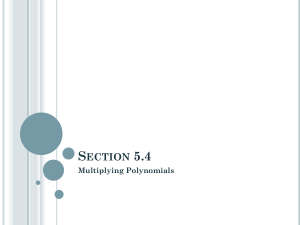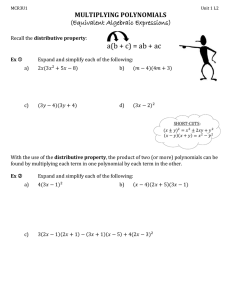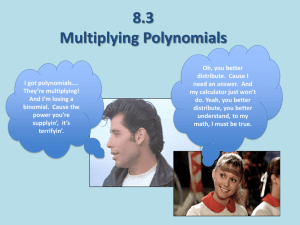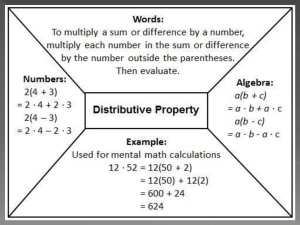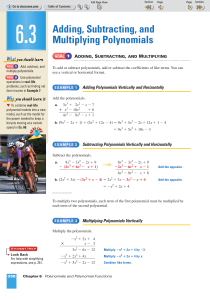Multiplying Polynomials
advertisement
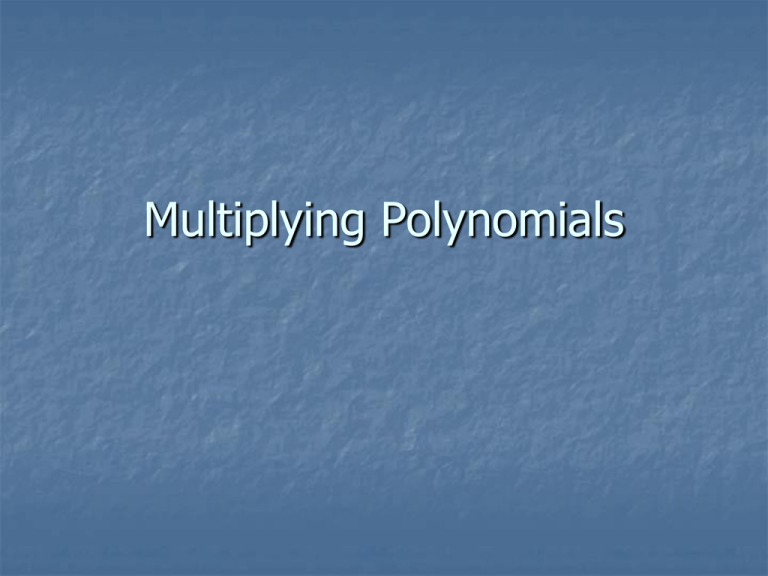
Multiplying Polynomials How do we find the area of a square? A s 2 The correct formula is written above. Use it to find the area of the square below. X X As we have already said, to find the area, we square the length of a side. X X Ax 2 What happens to the area if we add 3 units to the length and 1 unit to the width? 1 X X ---------3-------- This definitely increases the area. How can we find the area of the new shape? One way would be to add the areas of the individual rectangles that we have formed. 1 X 3 x2 x 3x 3 X X2 3x X ---------3-------- x2 4x 3 Another way of doing this would be using the formula for the area of a rectangle? A=lw 1 A=(x+3)(x+1) X X ---------3-------- How do we get from (x+3)(x+1) to x2 4x 3 ? We have already seen that 2(x+1) = 2x+2 We were able to do this multiplication by using the distributive property. We can also use the distributive property when we are multiplying polynomials by polynomials. We need to remember to distribute each term in the first set of parentheses through the second set of parentheses. Example: (X+3)(x+1)=(x)(x)+(x)(1)+(3)(x)+(3)((1) x x 3x 3 2 x 4x 3 2 Let’s work a few of these. 1.) (x+2) (x+8) 2.) (x+5) (x-7) 3.) (2x+4) (2x-3) Check your answers. 1.) (x+2) (x+8) = X2+10x+16 2.) (x+5) (x-7) = X2-2x-35 3.) (2x+4) (2x-3) = 4x2+2x-12 By learning to use the distributive property, you will be able to multiply any type of polynomials. Example: (x+1)(x2+2x+3) (x+1)(x2+2x+3) = X3+2x2+3x+x2+2x+3 x3 3x2 5x 3
